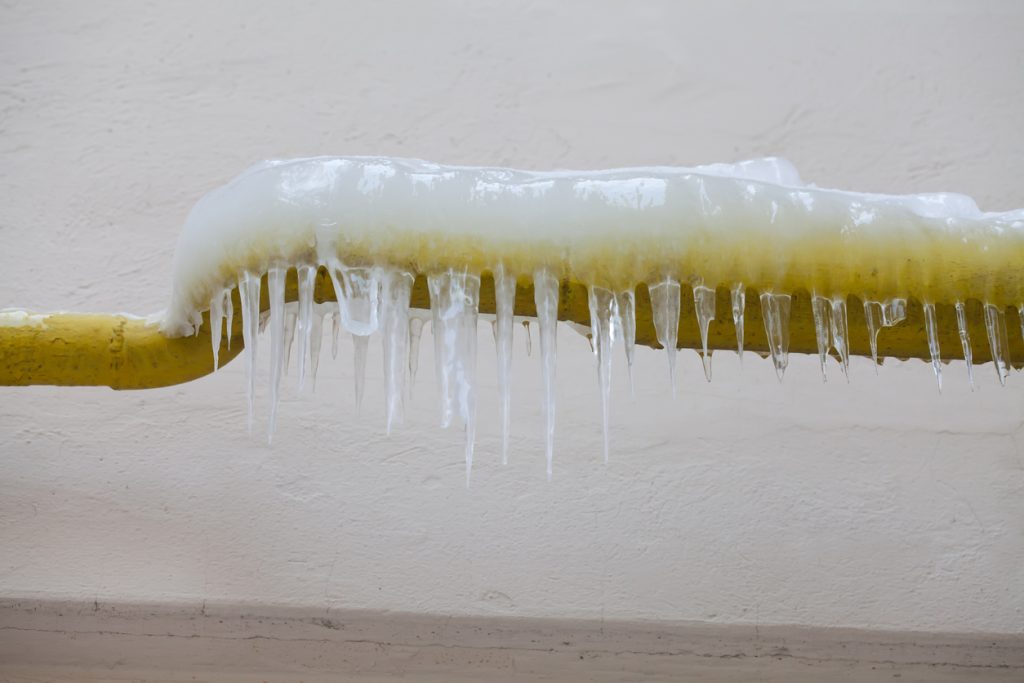How to Defend Pipes from Freezing: Specialist Advice
How to Defend Pipes from Freezing: Specialist Advice
Blog Article
Everyone has got their personal opinion when it comes to 6 Ways to Prevent Frozen Pipes.

Cold weather can ruin your plumbing, especially by freezing pipelines. Here's exactly how to avoid it from taking place and what to do if it does.
Introduction
As temperatures drop, the danger of icy pipelines rises, possibly resulting in pricey repair work and water damage. Recognizing exactly how to stop frozen pipes is essential for property owners in cool environments.
Recognizing Icy Pipes
What causes pipes to freeze?
Pipes freeze when exposed to temperature levels below 32 ° F (0 ° C) for extended periods. As water inside the pipelines freezes, it expands, taxing the pipeline wall surfaces and potentially causing them to burst.
Threats and damages
Icy pipes can lead to water interruptions, home damages, and expensive fixings. Burst pipes can flooding homes and create comprehensive architectural damages.
Indicators of Frozen Water Lines
Recognizing icy pipelines early can prevent them from bursting.
Exactly how to determine frozen pipes
Try to find lowered water circulation from taps, uncommon smells or noises from pipes, and visible frost on exposed pipes.
Avoidance Tips
Shielding prone pipelines
Wrap pipelines in insulation sleeves or use warmth tape to secure them from freezing temperature levels. Concentrate on pipes in unheated or external locations of the home.
Heating strategies
Keep indoor rooms properly heated, specifically areas with plumbing. Open closet doors to permit warm air to circulate around pipelines under sinks.
Safeguarding Exterior Plumbing
Yard pipes and outdoor taps
Disconnect and drain yard hose pipes prior to winter season. Mount frost-proof spigots or cover outside taps with insulated caps.
What to Do If Your Pipes Freeze
Immediate activities to take
If you believe frozen pipes, maintain taps open to eliminate stress as the ice melts. Use a hairdryer or towels soaked in hot water to thaw pipelines gradually.
Long-Term Solutions
Architectural changes
Consider rerouting pipes away from exterior walls or unheated areas. Add added insulation to attic rooms, cellars, and crawl spaces.
Updating insulation
Purchase high-quality insulation for pipelines, attic rooms, and walls. Proper insulation assists maintain constant temperatures and reduces the danger of icy pipelines.
Verdict
Preventing icy pipes calls for proactive measures and fast responses. By comprehending the reasons, indications, and safety nets, homeowners can shield their pipes during cold weather.
6 Proven Ways to Prevent Frozen Pipes and Protect Your Home
Disconnect and Drain Garden Hoses
Before winter arrives, start by disconnecting your garden hoses and draining any remaining water. Close the shut-off valves that supply outdoor hose bibs and leave the outdoor faucet open to allow any residual water to drain. For extra protection, consider using faucet covers throughout the colder months. It’s also important to drain water from any sprinkler supply lines following the manufacturer’s directions.
Insulate Exposed Pipes
Insulating your pipes is an effective way to prevent freezing. Pipe insulation is readily available at home improvement stores and is relatively inexpensive. Pay close attention to pipes in unheated areas such as the attic, basement, crawl spaces, or garage. Apply foam insulation generously to create a buffer against the cold. You can also wrap your pipes in heat tape or thermostat-controlled heat cables for added warmth.
Seal Air Leaks
Inspect your home for any cracks or openings that could let in cold air. Seal any holes around the piping in interior or exterior walls, as well as the sill plates where your home rests on its foundation. Additionally, make sure to keep your garage door closed unless you’re entering or exiting. Leaving it open creates a significant air leak that can lead to frozen pipes.
Allow Warm Air Circulation
During cold snaps, it’s essential to allow warm air to circulate evenly throughout your home. Leave interior doors ajar to promote better airflow. Open kitchen and bathroom cabinets to help distribute heat consistently around the rooms. If you have small children or pets, be sure to remove any household chemicals or potentially harmful cleaners from open cabinets for safety.
Let Faucets Drip
A small trickle of water can make a big difference in preventing ice formation inside your pipes. When temperatures drop significantly, start a drip of water from all faucets served by exposed pipes. This continuous flow helps prevent the water from freezing. Additionally, running a few faucets slightly can relieve pressure inside the pipes, reducing the chances of a rupture if the water inside does freeze.
https://choateshvac.com/6-proven-ways-to-prevent-frozen-pipes-and-protect-your-home/

I discovered that piece of writing on Prevent Frozen Pipes when doing a search on the web. You should set aside a second to promote this blog if you enjoyed it. Thank you so much for going through it.
Schedule Your Service Report this page